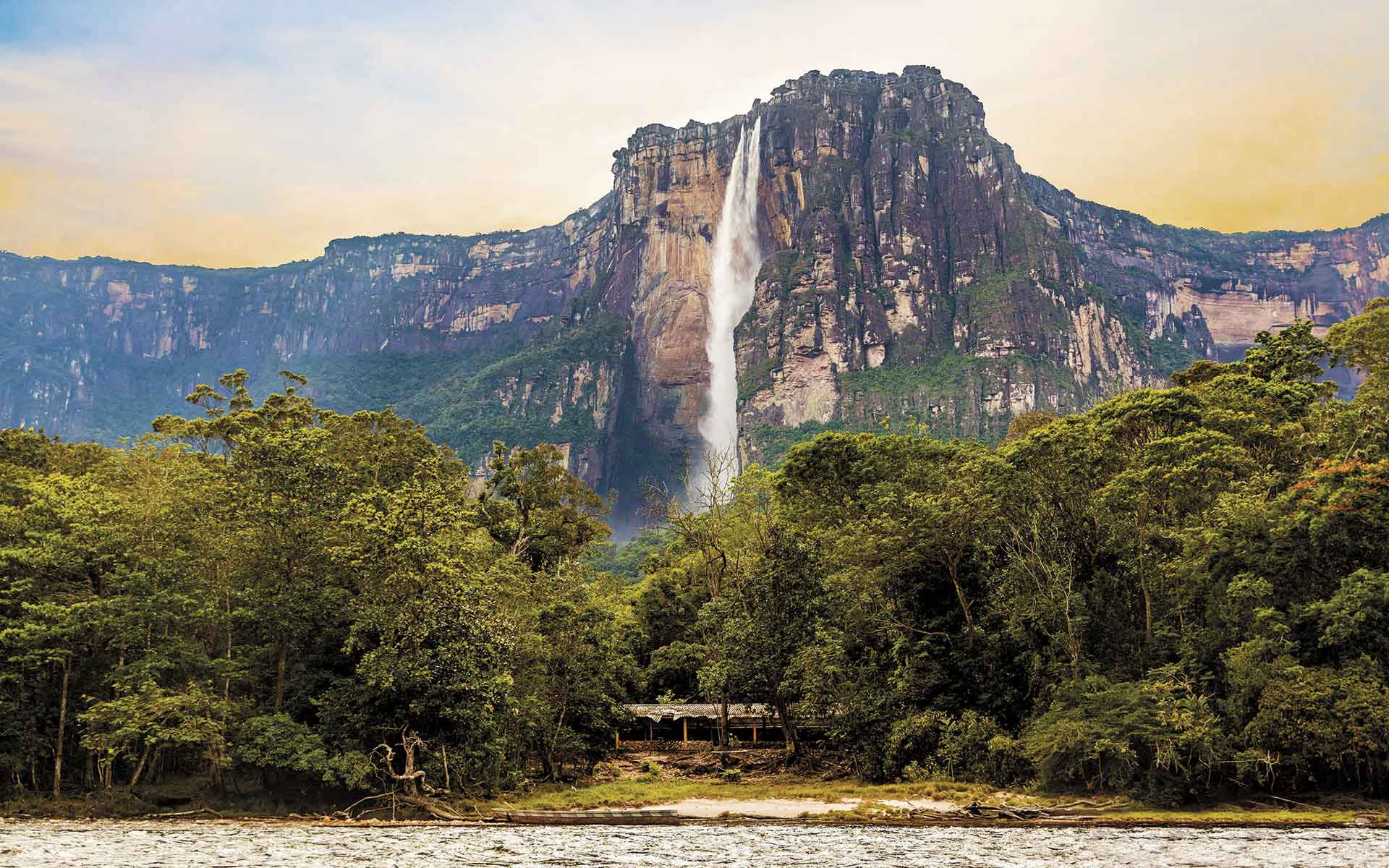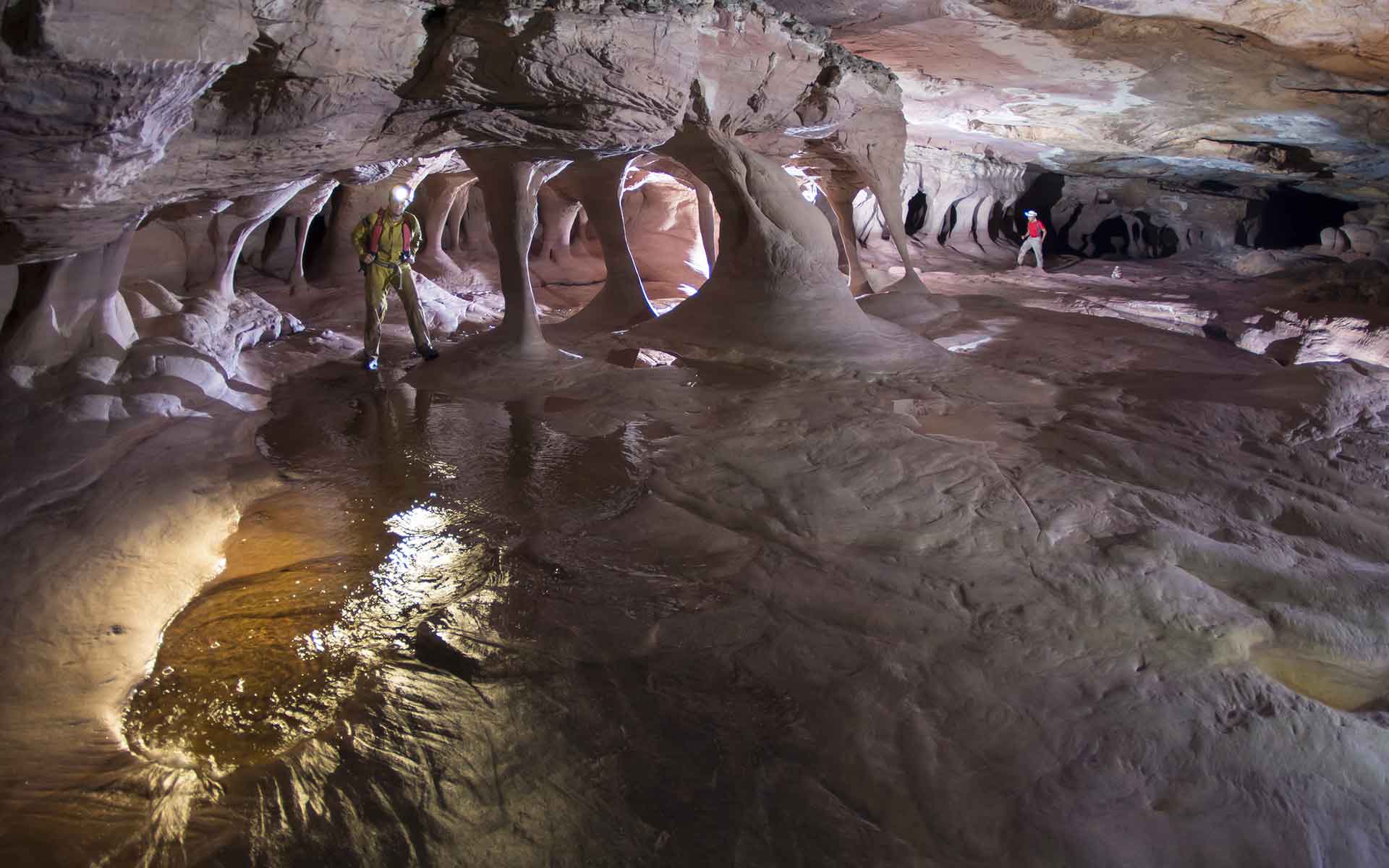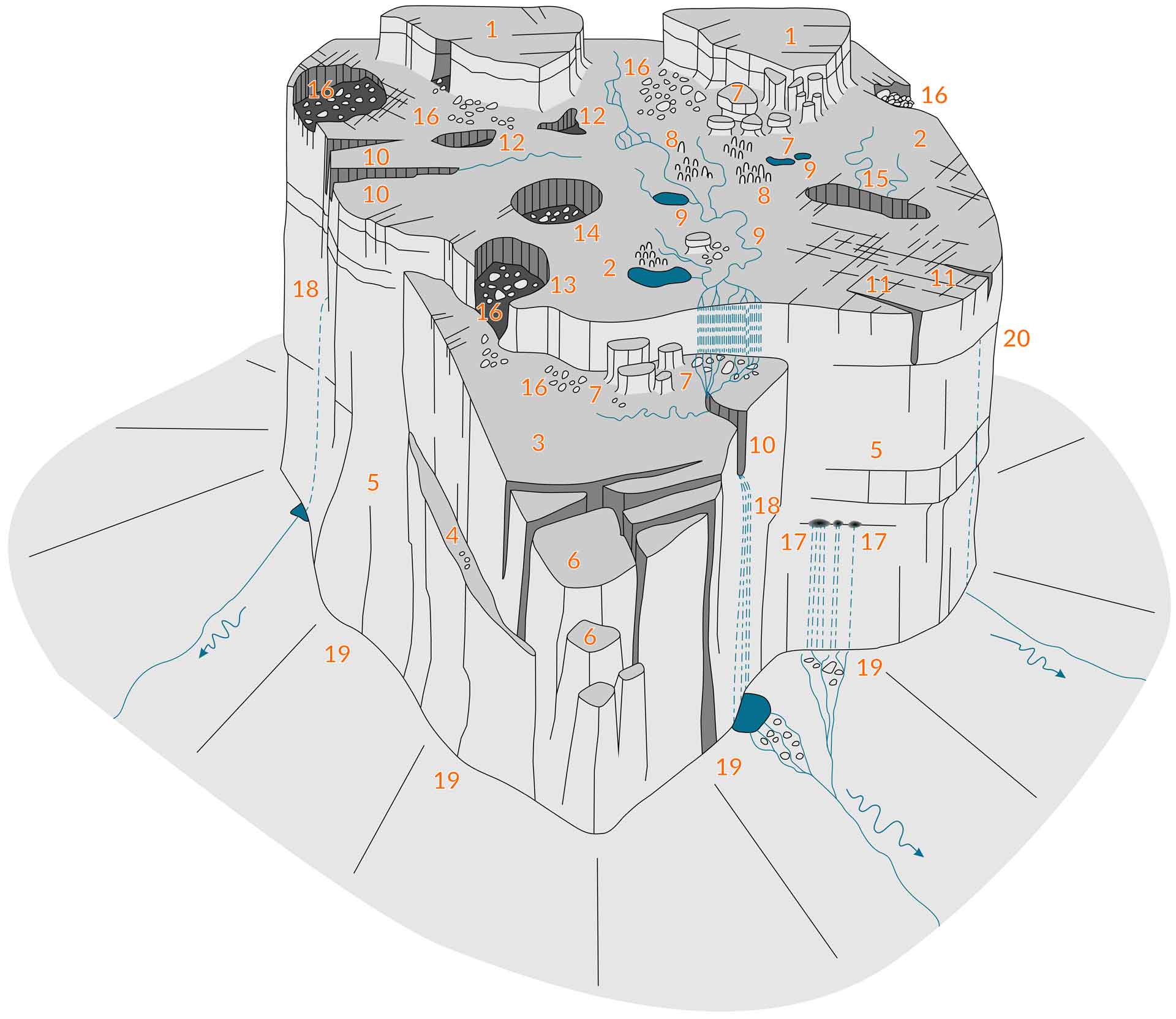
Tepuis are surrounded by sheer cliffs hosting numerous waterfalls, including Angel Falls (979 meters), the highest waterfall on Earth.
Geological Period
Paleogene to Quaternary
Main geological interest
Geomorphology and active geological processes
Location
Gran Sabana, Venezuela
05°51’29”N, 062°31’07”W
Tepuis are surrounded by sheer cliffs hosting numerous waterfalls, including Angel Falls (979 meters), the highest waterfall on Earth.
The World's Finest Quartzite Karst in an spectacular table mountains landscape with the highest waterfall on Earth.
Landforms similar to those in limestone karst, but in apparently non-soluble rocks, were long considered as a natural curiosity of little wider significance. Research in Gran Sabana demonstrated the critical role of quartz dissolution in the formation of surface and subsurface landforms, including ruiniform relief, dolines, karren, deep shafts, caves and speleothems. The mechanism of arenization, that is corrosion along grain contacts leading to loosening of the rock mass and making grains available for transport, was elaborated in detail and serves as a model for sandstone and quartzite disintegration (Sauro, 2014). Gran Sabana is therefore a global reference site for silicate karst.
- Geological description
The Gran Sabana is part of the Guyana Shield, located in the humid tropics of South America, just north of the Equator. The basement of Precambrian magmatic and metamorphic rocks is overlain by a thick succession of clastic sedimentary rocks, mainly quartz sandstones and conglomerates also of Precambrian age. This succession is a few kilometres thick and includes the most resistant quartz sandstones of the Matauí Formation, exposed in spectacular rock cliffs hundreds of meters high. The most conspicuous landscape elements are tabular hills (tepuis, mesas), with flattish summit surfaces surrounded by sheer cliffs hosting numerous waterfalls, including the highest waterfall on Earth – Angel Falls (979 meters). The tepuis have various dimensions and some form multi-tiered extensive plateaus, tens of kilometres long. The top surfaces of the tepuis show extraordinary diversity of relief, best described as ruiniform. It includes rock walls, towers and pinnacles separated by narrow corridors and basins. Closed depressions, acting as sinkholes for surface streams, and deep shafts are common. Large, multi-level caves occur inside the mesas. The region hosts some of the longest caves in quartz sandstones globally and several shafts exceed 300 meters deep.
- Scientific research and tradition
Extensive karst in non-carbonate rocks was described in the 1970s (Urbani and Szczerban, 1974). Research intensified in the 1990s (Briceño and Schubert, 1990), followed by exploration of surface and underground karst (Piccini and Mecchia, 2009). Gran Sabana has since become a benchmark locality for silicate karst globally (Wray, 2010; Wray and Sauro, 2017).
- Reference
Briceño, H.O. and Schubert, C. (1990) ‘Geomorphology of the Gran Sabana, Guayana Shield, southeastern Venezuela’, Geomorphology, 3(2), pp. 125–141. Available at: https://doi.org/10.1016/0169-555X(90)90041-N.
Galan, C. and Lagarde, J. (1988) ‘Morphologie et évolution des cavernes et formes superficielles dans les quartzites du Roraima’, Karstologia : revue de karstologie et de spéléologie physique, 11(1), pp. 49–60. Available at: https://doi.org/10.3406/karst.1988.2190.
Piccini, L. and Mecchia, M. (2009) ‘Solution weathering rate and origin of karst landforms and caves in the quartzite of Auyan-tepui (Gran Sabana, Venezuela)’, Geomorphology, 106(1), pp. 15–25. Available at: https://doi.org/10.1016/j.geomorph.2008.09.019.
Sauro, F. (2014) ‘Structural and lithological guidance on speleogenesis in quartz–sandstone: Evidence of the arenisation process’, Geomorphology, 226, pp. 106–123. Available at: https://doi.org/10.1016/j.geomorph.2014.07.033.
Urbani, F. and Szczerban, E. (1974) ‘Venezuelan caves in non-carbonate rocks: a new field in karst research’, NSS News, 32, pp. 233–235.
Wray, R.A.L. (2010) ‘The Gran Sabana: The World’s Finest Quartzite Karst?’, in P. Migon (ed.) Geomorphological Landscapes of the World. Dordrecht: Springer Netherlands, pp. 79–88. Available at: https://doi.org/10.1007/978-90-481-3055-9_9.
Wray, R.A.L. and Sauro, F. (2017) ‘An updated global review of solutional weathering processes and forms in quartz sandstones and quartzites’, Earth-Science Reviews, 171, pp. 520–557. Available at: https://doi.org/10.1016/j.earscirev.2017.06.008.
- Author(s)
Piotr Migoń.
Institute of Geography and Regional Development, University of Wrocław, Wrocław, Poland.
Francesco Sauro.
Italian Institute of Speleology, University of Bologna, Italy.


